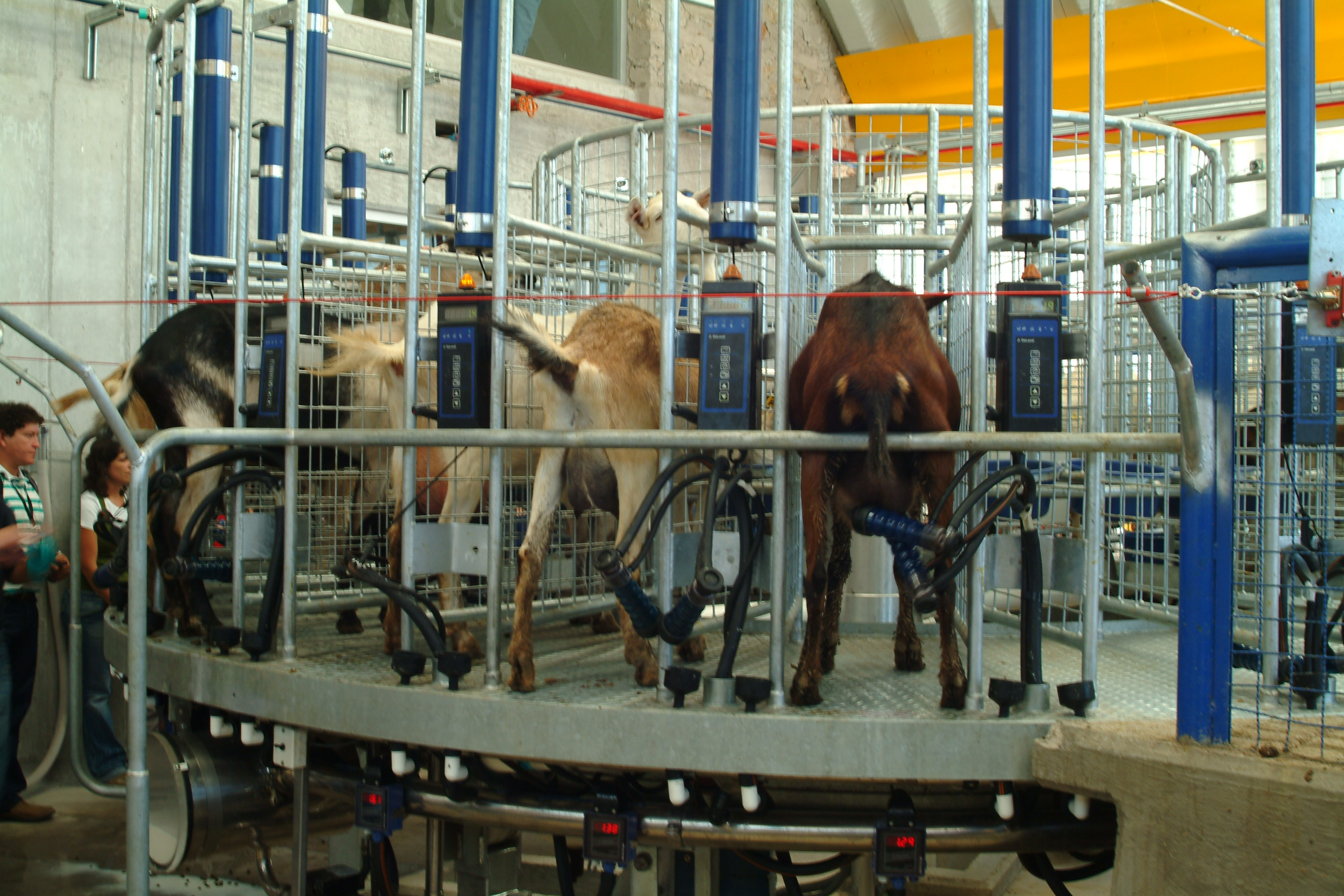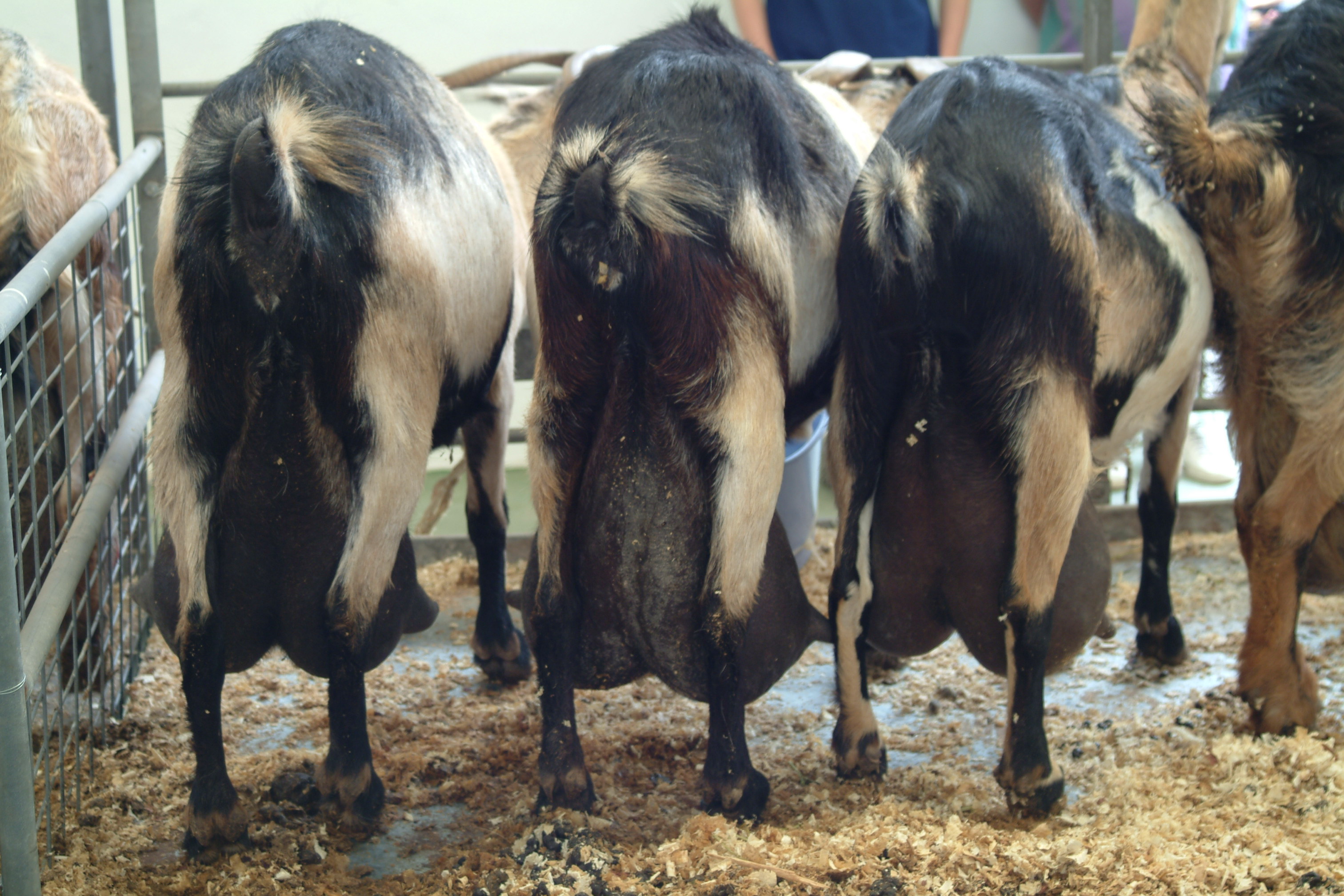Situation of Dairy Goats in the World
go.ncsu.edu/readext?457533
en Español / em Português
El inglés es el idioma de control de esta página. En la medida en que haya algún conflicto entre la traducción al inglés y la traducción, el inglés prevalece.
Al hacer clic en el enlace de traducción se activa un servicio de traducción gratuito para convertir la página al español. Al igual que con cualquier traducción por Internet, la conversión no es sensible al contexto y puede que no traduzca el texto en su significado original. NC State Extension no garantiza la exactitud del texto traducido. Por favor, tenga en cuenta que algunas aplicaciones y/o servicios pueden no funcionar como se espera cuando se traducen.
Português
Inglês é o idioma de controle desta página. Na medida que haja algum conflito entre o texto original em Inglês e a tradução, o Inglês prevalece.
Ao clicar no link de tradução, um serviço gratuito de tradução será ativado para converter a página para o Português. Como em qualquer tradução pela internet, a conversão não é sensivel ao contexto e pode não ocorrer a tradução para o significado orginal. O serviço de Extensão da Carolina do Norte (NC State Extension) não garante a exatidão do texto traduzido. Por favor, observe que algumas funções ou serviços podem não funcionar como esperado após a tradução.
English
English is the controlling language of this page. To the extent there is any conflict between the English text and the translation, English controls.
Clicking on the translation link activates a free translation service to convert the page to Spanish. As with any Internet translation, the conversion is not context-sensitive and may not translate the text to its original meaning. NC State Extension does not guarantee the accuracy of the translated text. Please note that some applications and/or services may not function as expected when translated.
Collapse ▲Written in Spanish by Francisco de Asis Ruiz Morales, International Goat Association Country Representative for Spain –
Tanslated into English by JM Luginbuhl
Worldwide goat milk production has increased by 108.7% from 1988 to 2013, from 8,828,266 to 18,422,372 metric tons (FAOSTAT, 2013). Nevertheless, the goat is still exploited mainly for the production of meat, milk only being the principal product on the European continent.
Table 1. Average production of goat milk at the continental level (FAOSTAT, 2013)
| Continent | Production per goat (gallons) |
| Africa | 15.7 |
| Americas | 17.0 |
| Asia | 25.6 |
| Europe | 73.8 |
| Oceania | 9.1 |
Dairy goats in Fuerteventura, Canary Islands, Spain (JM Luginbuhl)
In Europe, the goat milk market is mainly located in 3 countries: France, Spain and the Netherlands. In addition, Greece stands out at the production level. Each of these countries has their own peculiarities in terms of milk production and finished product systems. In recent years, The Netherlands has become one of the most important dairy resources for the French industry. The Dutch sector is characterized by highly technological systems, with animals of good genetic quality and a high capitalization of the farms. Spain stands out for its heterogeneity in milk production systems, from pastoral to indoor stall systems: the market for its milk depends mainly on the production of mixed cheeses (mixing milk from goat and cow, or from goat, ewe and cow) and from exports to France. The Spanish sector has been experiencing periodic price crises, but important advances have been made in the organization of its sector through Interprofessional (INLAC). France continues to be the European benchmark, both in milk production and in the production of pure goat cheese, with an increase in goat cheese production of 7.5%. In Greece, with its pastoral systems, goat milk is dedicated to the production of traditional cheeses for the national market and national consumption. In addition, new countries interested in goat milk are beginning to appear, due to the crisis in the dairy cow sector and/or as an opportunity for product diversification: countries like Italy and Portugal are moving in this direction.
Macro goat dairy in China (J Capote, ICIA)
Asi a is the number one continent in goat production: countries such as India, China or Bangladesh have a strong sector but, in the case of milk, directed mainly to self-consumption. With an important diversity of dairy breeds, some areas are beginning to develop an industry linked to dairy goat production with important projects, both in terms of volume and resources.
a is the number one continent in goat production: countries such as India, China or Bangladesh have a strong sector but, in the case of milk, directed mainly to self-consumption. With an important diversity of dairy breeds, some areas are beginning to develop an industry linked to dairy goat production with important projects, both in terms of volume and resources.
Milking parlor, Mexico (JM Luginbuhl)
 Mexico is the leading American country in goat production and represents the benchmark in the evolution of the goat dairy sector in Latin America. The systems continue to be mostly self-sufficient, using low resources both in terms of pastures and crop residues. In contrast, a more professional and innovative sector is developing, using more productive breeds, modern reproductive techniques and the transformation of milk into cheeses and other dairy products into small industries.
Mexico is the leading American country in goat production and represents the benchmark in the evolution of the goat dairy sector in Latin America. The systems continue to be mostly self-sufficient, using low resources both in terms of pastures and crop residues. In contrast, a more professional and innovative sector is developing, using more productive breeds, modern reproductive techniques and the transformation of milk into cheeses and other dairy products into small industries.
Concerning the African continent, the situations are diverse, according to the regions but, in general, meat production is the main product. Different activities have been initiated for the development of dairy in certain countries, especially in northern and western Africa, with attempts to improve the production of their animals but also in training for the production of dairy products.
Milk from goats is a product with many development opportunities and future due to its nutritional characteristics, its diversification in terms of the elaboration of transformed products (milk, cheese, yogurt, desserts…) and, above all, due to the adaptability of the goat to a multitude of environmental conditions, thanks to the still existing biodiversity still in goat breeds.
Literature Cited
FAOSTAT, 2013. http://www.fao.org/faostat/en/#home
IGA, 2016. http://www.iga-goatworld.com/
Franciscoa.ruiz@juntadeandalucia.es
Responsible for the International Goat Association (IGA) in Spain.
Economy area of the Agrofood chain, IFAPA.




